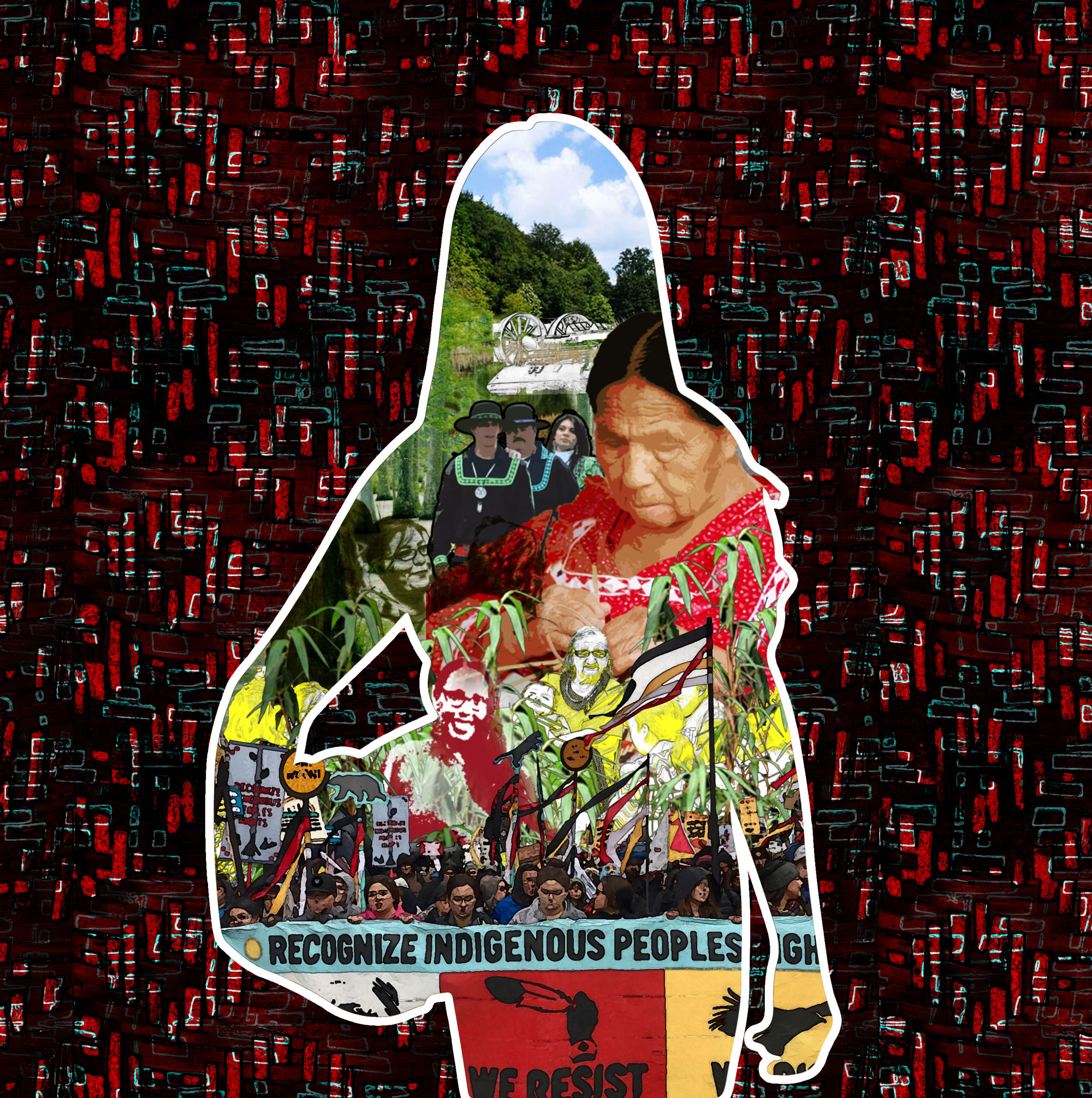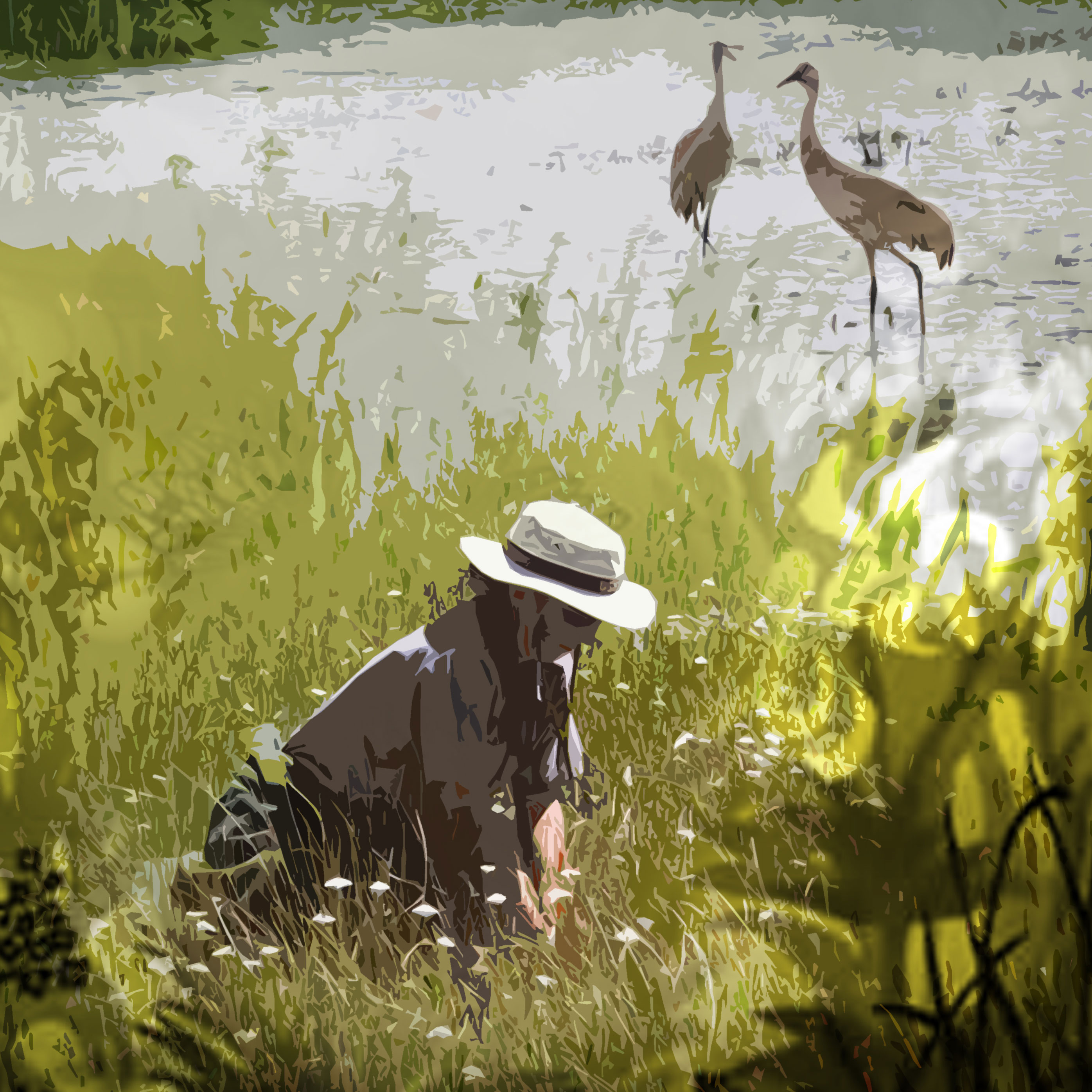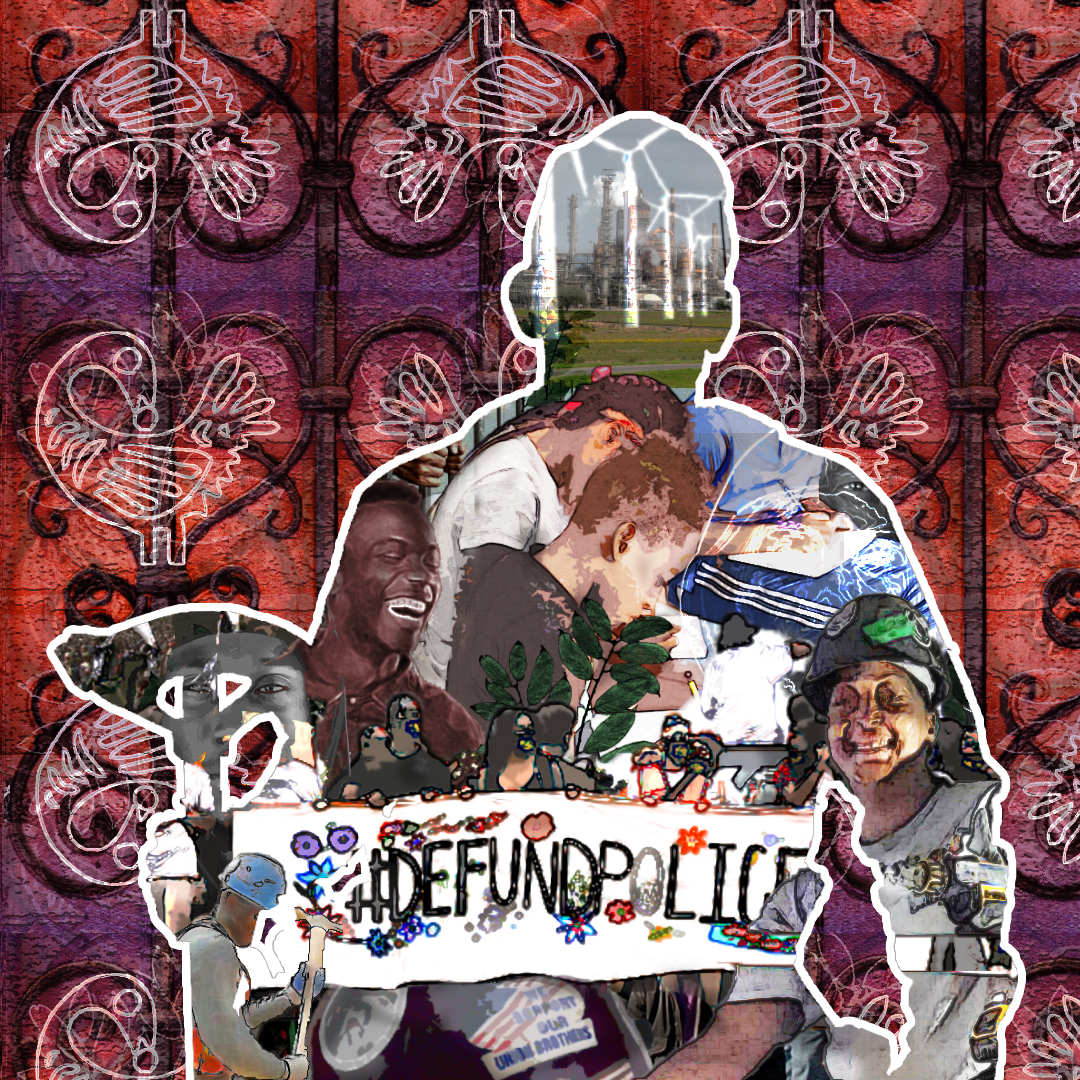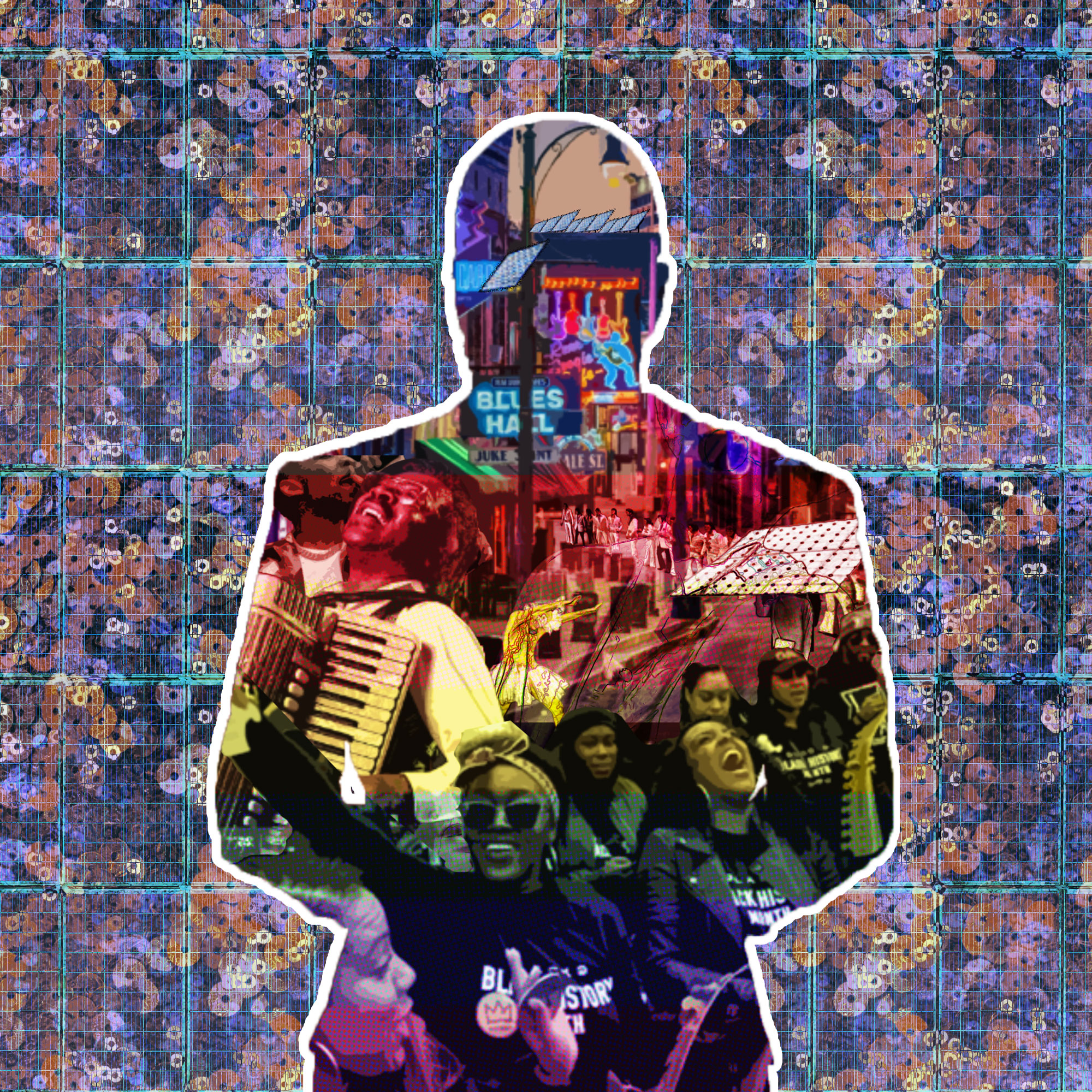

Angelina Hamilton
Coahoma County, MS | Organizer & Trainer at the Rivers & Coasts Dept.
2040
Angelina is a Native American woman from the larger Choctaw nation that exists in Oklahoma as of 2020. She works at the River and Coasts Department of the Delta Regional Authority. Sovereignty over areas of the Choctaw ancestral homeland was finally fully restored to her affiliated Tribal Council. Angelina works to increase biodiversity and health in migrating wetlands. She talks about how they lease some of the land to US government under strict conditions and have managed the pushback to the land back movement. The interview concludes with Angelina talking about her friend Maria Vera at the completely reformed Army Corps of Engineers, now fully civilian and called the National Water Cooperative Service. The interview takes place in 2040.
Interviewer: Hi Angelina, thank you for talking with me today to discuss the Green New Deal. So, can you just share some information on what the River and Coasts Department is and your current position.
Angelina: Sure, thank you for the interview opportunity, Jamie . The Rivers and Coasts Department is the Delta Regional Authority’s central agency monitoring and preserving the health of our nation’s wetlands as one of the most effective carbon sinks out there. Twenty years ago, Louisiana had over 3 million acres of wetlands, but due to the gas and oil industry, and years and years of terrible government and industry decisions that led to climate change, they were declining at a dramatic rate of 22,200 acres annually . While this may seem small compared to total wetland acreage, it was incredibly difficult to reduce these losses, total restoration was near impossible, and the rate of decline was increasing each year. Just to give a statistic highlighting what we were up against, more than half the Nation’s original wetlands have been lost over the past 200 years . These are our beautiful swampy homelands full of life with birds, fish, and animals, let alone our unique cultural heritage. This was catastrophic loss.
Interviewer: Wow that’s a worrying fact, sounds like we had a lot of work to do.
"As a result, I have a fairly autonomous position that requires little reporting and more on-the-ground management, leading to higher rates of wetland preservation...”
Angelina: Certainly, I’m glad to be in a position where I could contribute more widely to making gains. We’ve now expanded wetlands along the Mississippi River by hundreds of thousands of acres . As an organizer with R&C, I help recruit and train new cohorts of Wetland Repair Coordinators employed through the Public Works Program. In 2030, the Environmental Protection Agency increased their investment in the existing State and Tribal Wetland Program Plans in addition to increasing tribal control of funding streams and project management. As a result, I have a fairly autonomous position that requires less reporting and more organizing leading to higher rates of wetland preservation and restoration.
 Angelina Hamilton with the Tribal Wetlands Program.
Angelina Hamilton with the Tribal Wetlands Program.
Interviewer: That sounds like a nice improvement. Can you talk more specifically about what you all have been able to accomplish and look to achieve going forward?
Angelina: After one of the Land Bank policies from the Truth and Conciliation process was enacted, all the branches of my tribal nation signed an agreement with the federal government to lease 50% of our returned land under a 50-year land bank deal. The agreement ensures that we’ll have a consistent role in monitoring conditions throughout the term of the lease, the land must observe advanced Tribal Wetland regulations and may only be subleased to serve a public purpose like housing. In the meantime, the rest of our land is the launch site for a long-term design and development initiative that will hopefully serve as a model for creating wetland habitats as memorials and resource centers. Women and femmes in the Choctaw tribe have always been the moral authority when it comes to monitoring and managing our land’s fertility and gifts. I and my coworkers have now planted more river cane than any other place in North America and finally the river is starting to get its big cane breaks back. These stands of cane provide important habitat for wildlife and make for a good cover crop during times when fields are lying fallow. We’re also working with local farmers and soon we will be able to supply some cane as a renewable building material. This means that that most of the bamboo construction we’ve been seeing in recent years with all the building retrofits no longer needs as much bamboo to be shipped as far. Thanks to a group of farmers and foresters, the mature river cane products have already become a part of the FSC regulated supply chain. This is an example of the sorts of things we’ve been able to accomplish by partnering with the federal government. Now we are able to lead more concentrated pilot efforts while we figure out the exact resources, personnel, and land care techniques necessary to carry out this program across all of our returned lands.
Interviewer: Given the tribal nation’s troubled relationship with the federal government, what incentive did you have to enter into the land bank deal?
Angelina: After one of the Land Bank policies from the Truth and Conciliation process was enacted, all the branches of my tribal nation signed an agreement with the federal government to lease 50% of our returned land under a 50-year land bank deal. The agreement ensures that we’ll have a consistent role in monitoring conditions throughout the term of the lease, the land must observe advanced Tribal Wetland regulations and may only be subleased to serve a public purpose like housing. In the meantime, the rest of our land is the launch site for a long-term design and development initiative that will hopefully serve as a model for creating wetland habitats as memorials and resource centers. Women and femmes in the Choctaw tribe have always been the moral authority when it comes to monitoring and managing our land’s fertility and gifts. I and my coworkers have now planted more river cane than any other place in North America and finally the river is starting to get its big cane breaks back. These stands of cane provide important habitat for wildlife and make for a good cover crop during times when fields are lying fallow. We’re also working with local farmers and soon we will be able to supply some cane as a renewable building material. This means that that most of the bamboo construction we’ve been seeing in recent years with all the building retrofits no longer needs as much bamboo to be shipped as far. Thanks to a group of farmers and foresters, the mature river cane products have already become a part of the FSC regulated supply chain. This is an example of the sorts of things we’ve been able to accomplish by partnering with the federal government. Now we are able to lead more concentrated pilot efforts while we figure out the exact resources, personnel, and land care techniques necessary to carry out this program across all of our returned lands.
Interviewer: A major pushback against the Indigenous Land Restoration Act, from a wide swath of demographics, was the perception that their own land was being taken away and that Native populations no longer live there so why should they be given ownership. Can you speak to this critique and what you all have done to address it?
Angelina: The history of land theft has become fairly well-known and publicized since the Truth and Reconciliation report came out 10 years ago. We also made clear that our kin such as the Jena Band and the Mississippi Band of Choctaw Indians, do still live here, despite centuries of attempts to deny our rights. Once this history, and its impact on all parts of the population entered the public psyche, the public became more open to the idea of Land Back. It helps that people have realized we aren’t asking them to move, just share access to the land and trust that we are all trying to make things better. Also, we have provided the Black community with first choice of tax-free land, re-recognized ancestral Black members of the tribe and their descendants, and finally begun a healing process for harms our ancestors caused the Black community under influence of colonizers. This has helped a lot in terms of local solidarity. I work with my cousin, George, whose family’s membership was restored, to help continue outreach and community building across racial identities. Still, there are some people who live on our land that will always be against the tribal ownership, but engaging with that’s just a part of my job. Also, the funds we collect through the land lease are distributed through a democratic budgeting process that has so far received overwhelming support from the general public. It’s not like everything is perfect, but these funds have resulted in a direct improvement in people’s lives.
Interviewer: Sounds like you have a great handle on how to navigate what can be an incredibly complex situation. Beyond the work you’re doing here in Phillips and Coahoma County, would you like to talk about any other GND programs that fascinate you?
Angelina: My friend Maria Vera down by the Gulf coast just told me that she’s working with the Shipbuilders Union to secure an innovative hovercraft cargo carrier production deal with the DRA and federal government. She’s a recent graduate of Alabama State University’s Engineering program and is employed by the National Water Cooperative Service, formerly known as the Army Corps of Engineers. It was a big deal when they underwent significant shifts to focus on ecological and socially just projects in alignment with the federal government’s GND mandate. Given the complexity and urgency of issues they are held to address, they are actively recruiting critical and interdisciplinary folks, from engineers to landscape architects, committed to mitigating the climate crisis. I know they’ve been doing phenomenal work with the Free the Mississippi Program, which I’m also working on up here; Maria is thrilled to be there. The hovercrafts will ensure that the Mississippi River can still be used as a shipping route. The smaller craft being ordered will also increase the amount of environmental monitoring we can perform as part of ensuring the Free the Mississippi program is going as intended. The NWCS has done a great job in Phase 1 of the riverside expansion and I think Maria will appreciate being able to advance Green New Deal legislation throughout her career.




